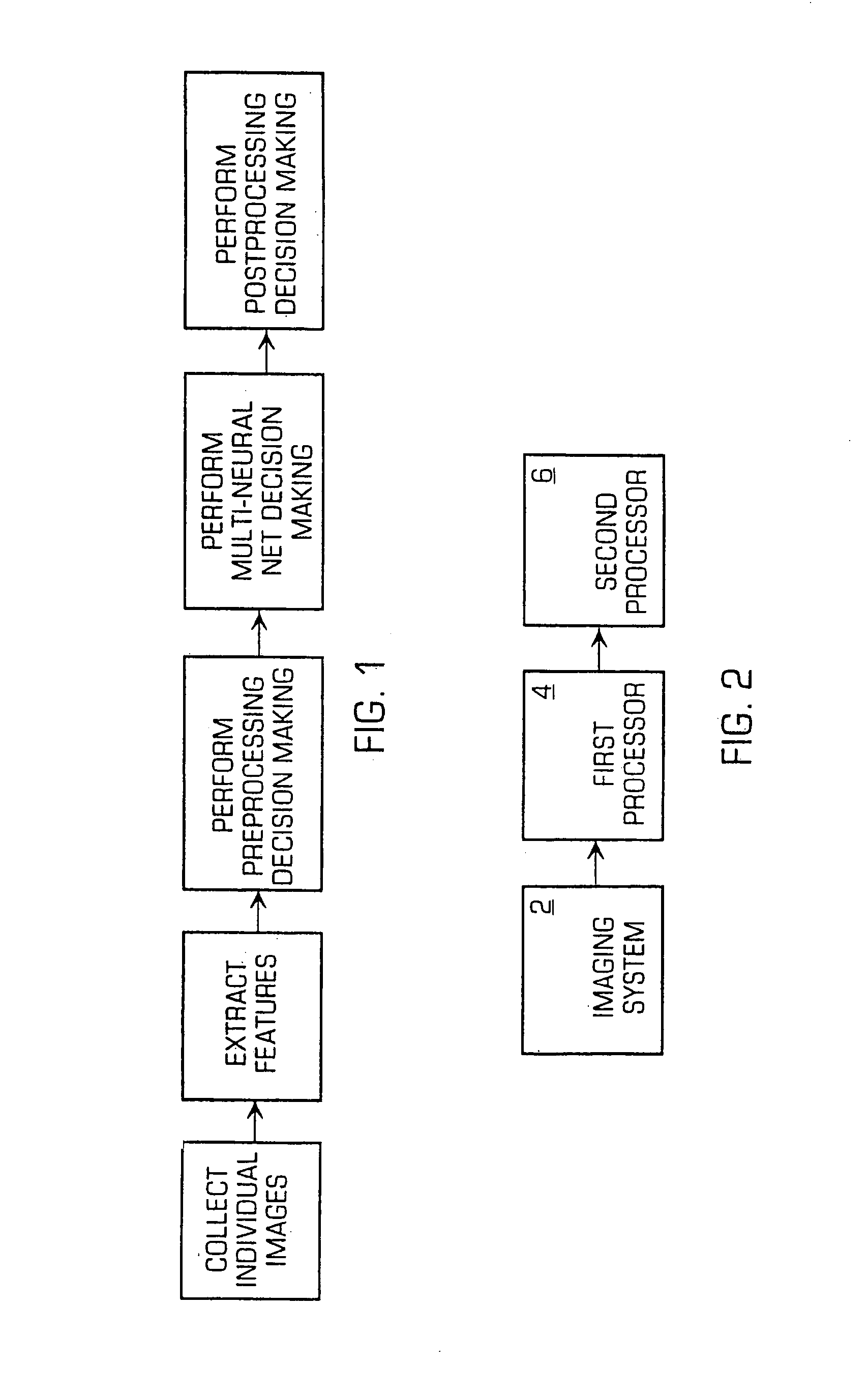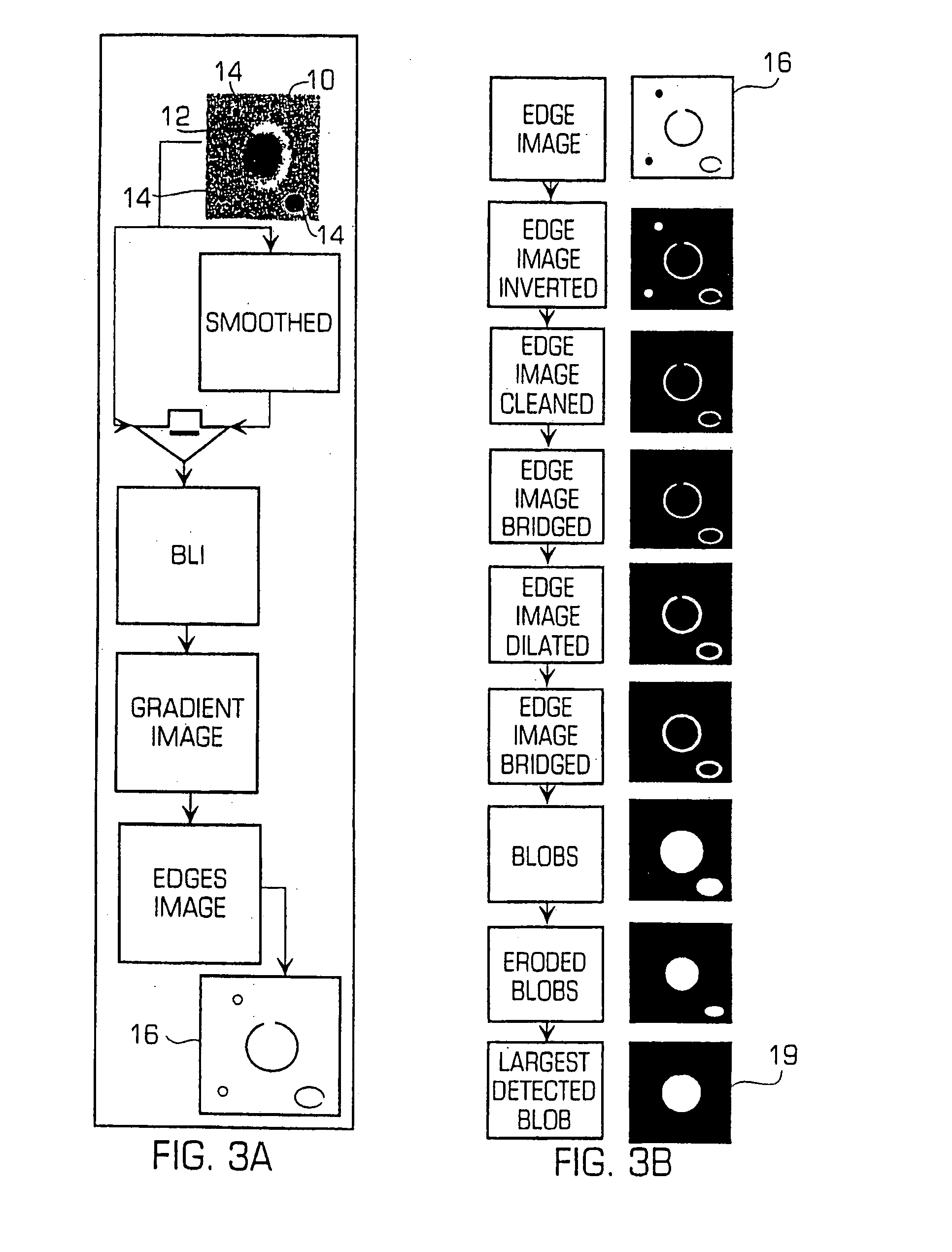Analyte recognition for urinalysis diagnostic system
- Summary
- Abstract
- Description
- Claims
- Application Information
AI Technical Summary
Benefits of technology
Problems solved by technology
Method used
Image
Examples
embodiment
[0219]Alternate Embodiment
[0220]Described below is an alternate embodiment of the multi-neural net imaging apparatus and method of the present invention. This alternate embodiment is similar to the basic method above, except it 1) can include a different boundary enhancement technique, 2) utilizes preprocessing based upon simple extracted particle features to screen out artifacts and mucus threads, 3) utilizes multiple neural net decision making using more complex extracted particle features, 4) utilizes post processing to analyze the ensemble of decisions, as described in more detail below. The general particle feature extraction described above is generally used, however color is not used in this alternate embodiment (images are in gray-scale). Thus, size, shape and texture are used to aid in the accurate classification of particle type.
[0221]Boundary Enhancement
[0222]The boundary enhancement described above can be used for the alternate embodiment to enhance particle feature extr...
PUM
 Login to View More
Login to View More Abstract
Description
Claims
Application Information
 Login to View More
Login to View More - R&D
- Intellectual Property
- Life Sciences
- Materials
- Tech Scout
- Unparalleled Data Quality
- Higher Quality Content
- 60% Fewer Hallucinations
Browse by: Latest US Patents, China's latest patents, Technical Efficacy Thesaurus, Application Domain, Technology Topic, Popular Technical Reports.
© 2025 PatSnap. All rights reserved.Legal|Privacy policy|Modern Slavery Act Transparency Statement|Sitemap|About US| Contact US: help@patsnap.com



